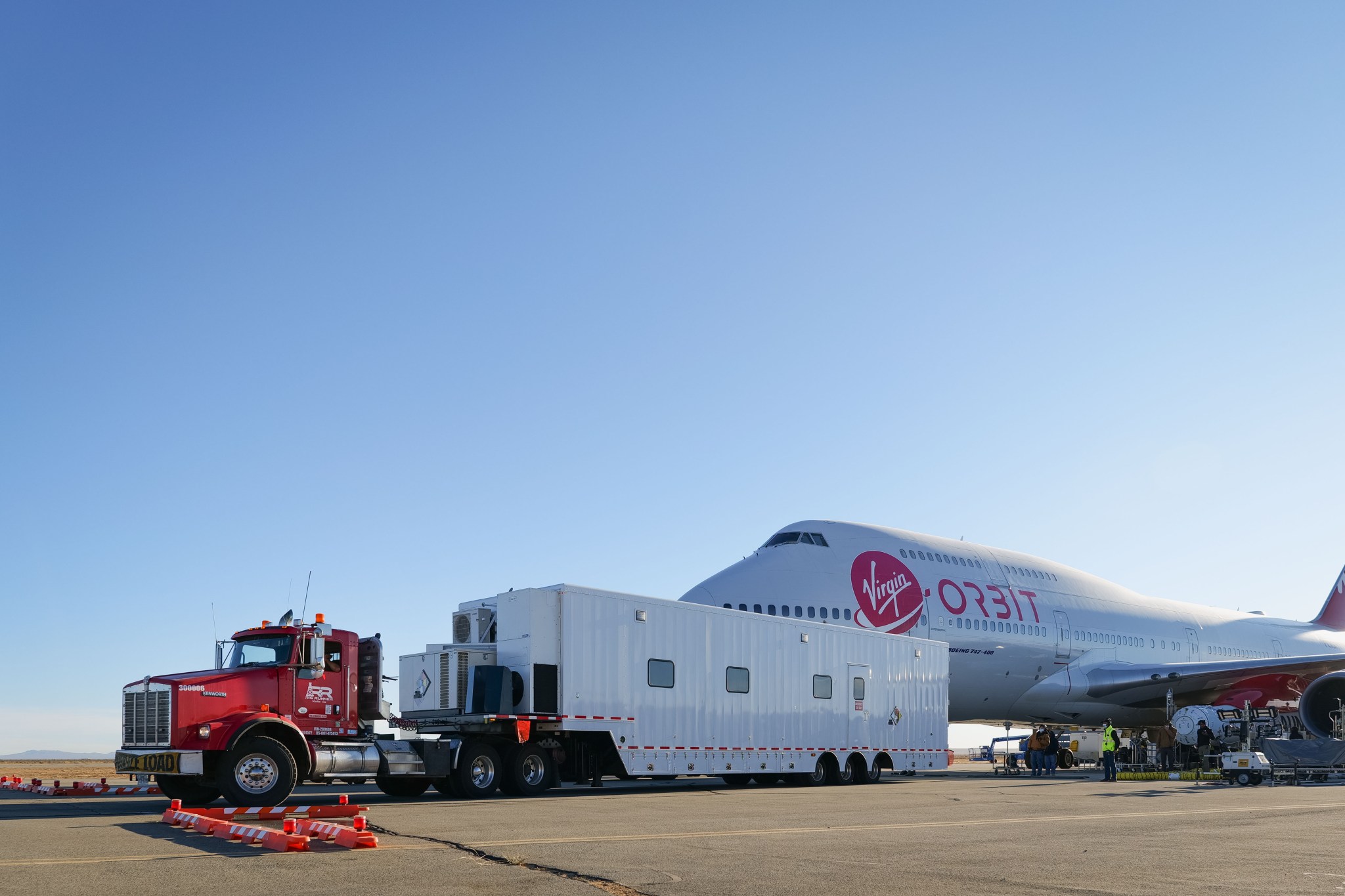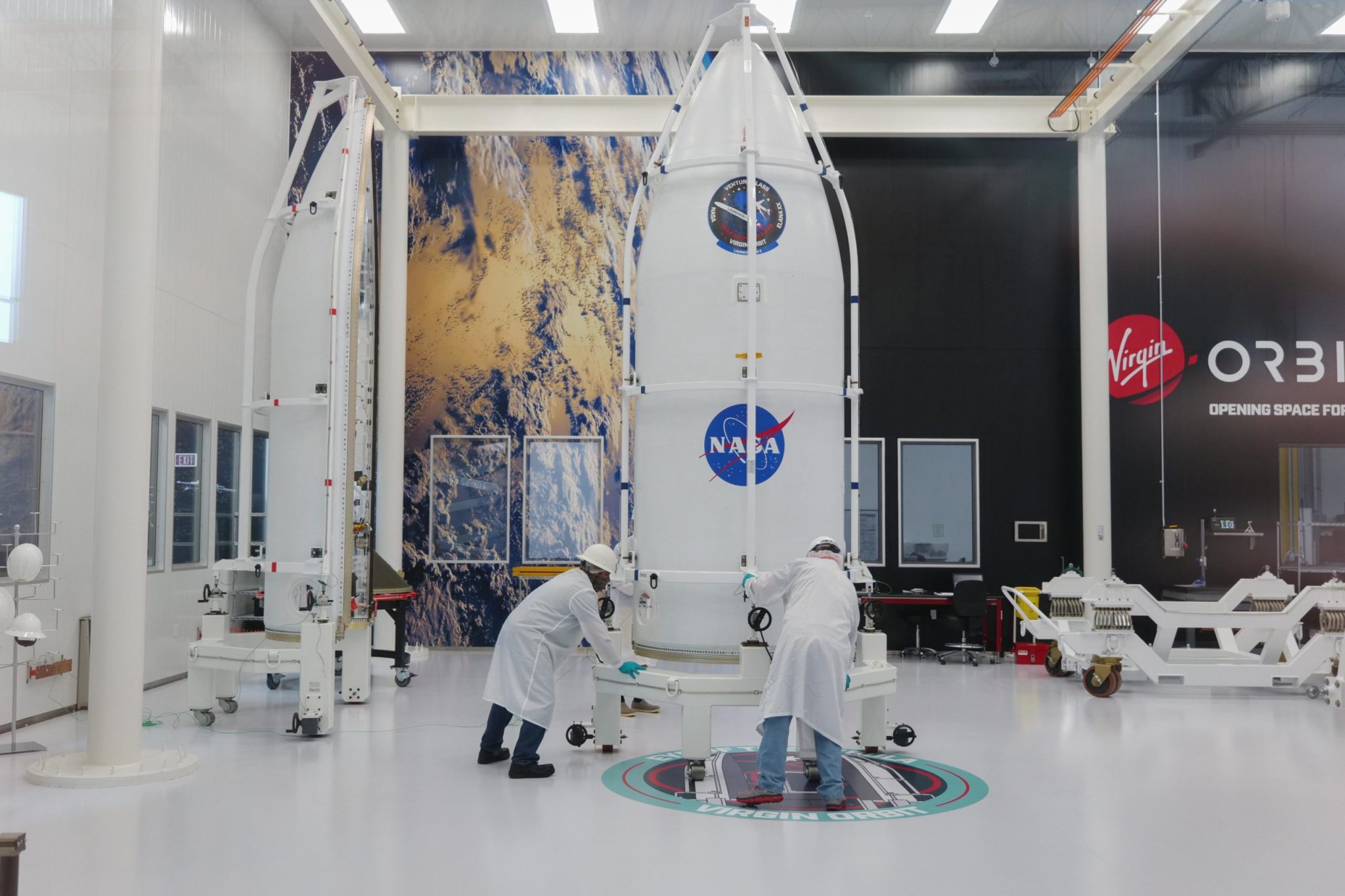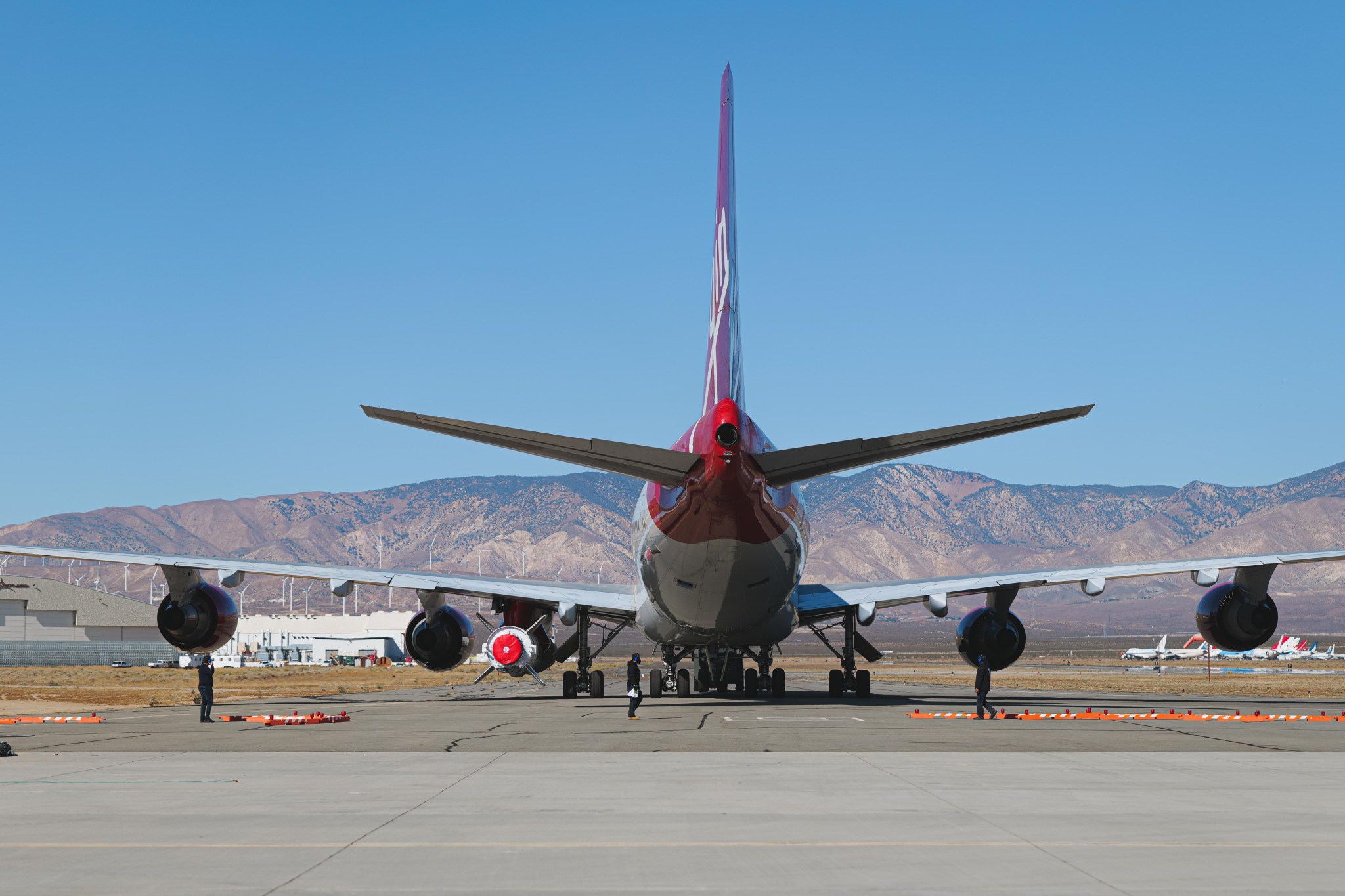By Danielle Sempsrott
NASA’s Kennedy Space Center
(Editor’s Note: The launch of ELaNa 20 now is targeted for Jan. 17, 2021. The launch window is from 10 a.m. to 2 p.m. PST (1 to 5 p.m. EST).
Ten NASA-sponsored CubeSats are preparing to fly on the agency’s next Educational Launch of Nanosatellites (ELaNa) mission, making this the first payload carried by Virgin Orbit’s LauncherOne rocket.
With the small satellites safely secured inside the payload fairing, and the fairing mated to the rocket, Virgin Orbit is gearing up for ELaNa 20, the Dec.19, 2020, Launch Demo 2 flight from the Mojave Air and Space Port in California.

“This initiative actually enables the market for future CubeSats or future missions needing a ride to space by providing different approaches and different options to better meet spacecraft needs,” Hector Viera, NASA’s contracting officer representative for Virgin Orbit. “This launch is going to open the doors for them (Virgin Orbit) and for NASA, and that’s a good thing.”
Virgin Orbit completed their first launch demo earlier this year, validating that LauncherOne could be successfully air-launched from the company’s “Cosmic Girl” carrier aircraft. LauncherOne attaches to the underside of the 747 aircraft’s left wing. On launch day, once the aircraft reaches a specified altitude, the rocket will be released from the wing for a controlled drop over the Pacific Ocean. After dropping, LauncherOne’s NewtonThree first stage engine will ignite, starting the launch sequence that will send the satellites on board into low-Earth orbit.
“This is the first time Virgin Orbit is actually launching NASA payloads or has had some interaction with NASA,” Viera said. “Both teams have learned a lot from each other, and getting ready to see the launch and all the progress they’ve made is a huge deal.”
Virgin Orbit was one of three companies selected as Venture Class Launch Services (VCLS) providers through a contract NASA first awarded in October 2015. Before then, small satellites and science missions could only fly when NASA and other launch providers had space available. Now, dedicated launch opportunities are available for CubeSats and other small payloads through the contracts, managed by NASA Kennedy Space Center’s Launch Services Program (LSP) in Florida.
A low-cost platform for agency missions, CubeSats and other small satellites are beginning to play a larger role in exploration, technology demonstration, scientific research, and educational investigations at NASA. The 10 CubeSats set to launch on this mission were designed and built by eight different universities in the United States, as well as one NASA center. These include:
- PolarCube – University of Colorado at Boulder, Boulder, Colorado
- MiTEE – University of Michigan, Ann Arbor, Michigan
- CACTUS-1 – Capitol Technology University, Laurel, Maryland
- Q-PACE – University of Central Florida, Orlando, Florida
- TechEdSat-7 – NASA Ames Research Center, Moffett Field, California
- RadFXSat-2 – Vanderbilt University, Nashville, Tennessee
- EXOCUBE – California Polytechnic University, San Luis Obispo, California
- CAPE-3 – University of Louisiana at Lafayette, Lafayette, Louisiana
- PICS (two CubeSats) – Brigham Young University, Provo, Utah
NASA selected and sponsored these providers through the agency’s CubeSat Launch Initiative (CSLI). By offering CubeSat developers a relatively low-cost avenue to conduct science investigations and technology demonstrations in space, NASA gives K-12 schools, universities, and non-profit organizations hands-on flight hardware development experience.
“The journey to this launch has been long and challenging,” said Scott Higginbotham, ELaNa 20 mission manager. “Our CubeSat developers have invested much of themselves in their spacecraft, and I know they’ll all be thrilled to see them fly later this month.”
The Dec. 19 launch window for ELaNa 20 will be open from 10 a.m. to 2 p.m. PST (1 p.m. to 5 p.m. EST), with additional backup opportunities in the ensuing weeks.


























